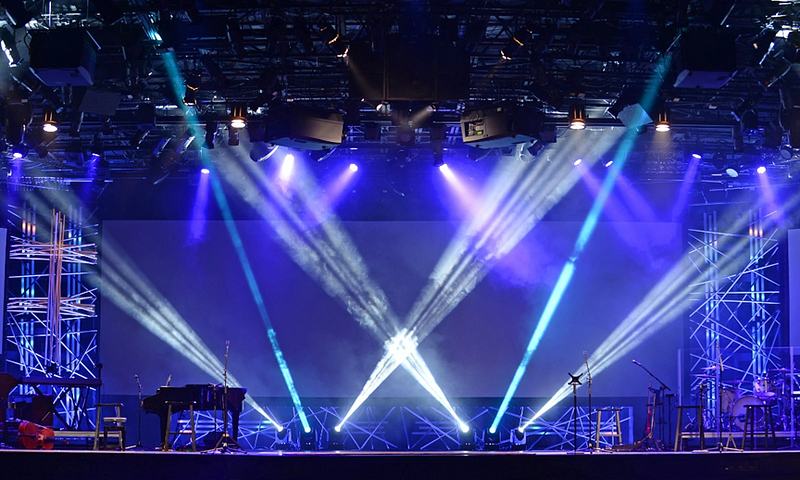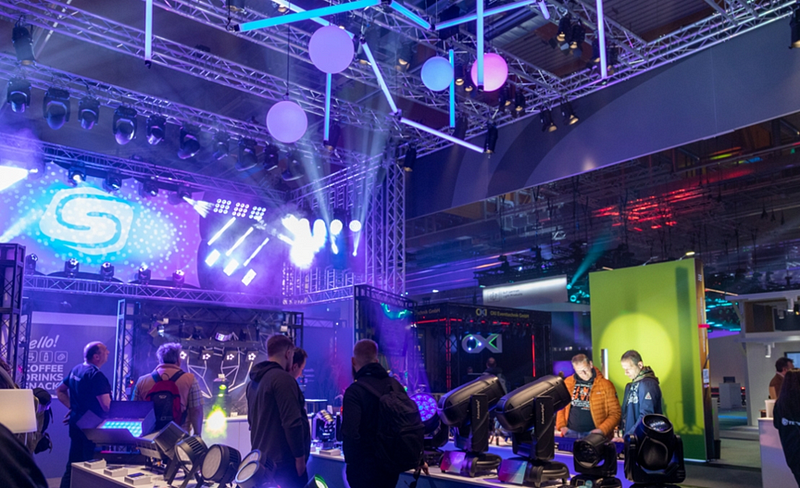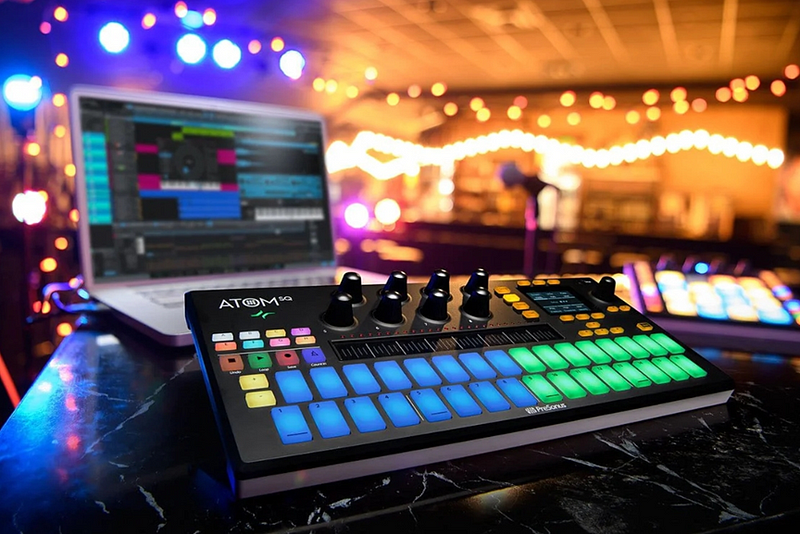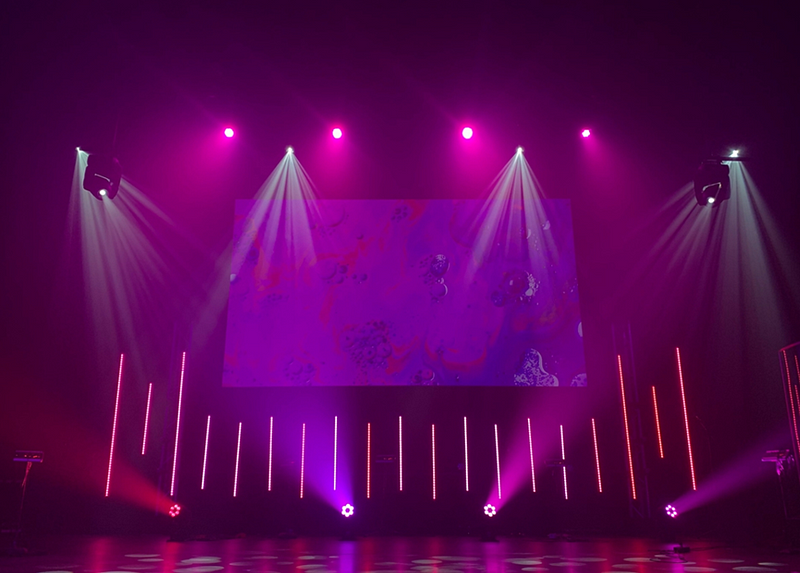Mastering the Art of Pro Sound and Stage Lighting: Essential Tips and Techniques from Jodi Brown's blog
Mastering the Art of Pro Sound and Stage Lighting: Essential Tips and Techniques………………….. 1
Introduction to Pro Sound and Stage Lighting………………………………………………………………………………. 1
Understanding the Basics of Sound Systems………………………………………………………………………………… 1
Choosing the Right Equipment for Your Needs……………………………………………………………………………. 2
Tips for Setting Up a Professional Sound System…………………………………………………………………………. 3
Techniques for Optimal Stage Lighting………………………………………………………………………………………… 4
Common Mistakes to Avoid in Pro Sound and Stage Lighting…………………………………………………….. 5
Advancements in Technology: The Future of Pro Sound and Stage Lighting………………………………. 6
Conclusion…………………………………………………………………………………………………………………………………….. 7
Introduction to Pro Sound and Stage LightingWelcome to the exhilarating world of pro sound and stage lighting! Whether you’re a seasoned professional or just starting out, this blog post is here to help you master the art of creating unforgettable audio experiences and visually stunning performances. From understanding the basics of sound systems to choosing the right equipment for your needs, we’ll guide you through essential tips and techniques that will elevate your productions to new heights.
In this dynamic industry where innovation never sleeps, it’s crucial to stay on top of advancements in technology. That’s why we’ll also explore how LED track lights, LED wall lights, LED moving head lights, beam moving head lights, and LED wash lights are revolutionizing pro sound and stage lighting.
So let’s dive into the captivating realm of mesmerizing sounds and dazzling visuals in order to create unforgettable experiences for audiences around the globe! Get ready to unleash your creative genius as we embark on this thrilling journey together.
When it comes to sound systems, having a basic understanding is essential for anyone involved in the world of pro sound and stage lighting. Whether you’re a musician, DJ, event planner, or technician, knowing how sound systems work can greatly enhance your ability to create an immersive experience for your audience.
At its core, a sound system consists of three main components: input devices such as microphones or instruments, signal processing equipment like mixers and equalizers, and output devices including speakers or headphones. These components work together to capture and amplify audio signals so they can be heard by the audience.
One crucial aspect to consider when setting up a sound system is acoustics. The size and shape of the venue will impact how sound waves travel through space. Understanding room dynamics allows you to make adjustments for optimal clarity and avoid unwanted echoes or distortion.
Another important factor is speaker placement. By strategically positioning speakers throughout the venue, you can ensure even coverage and prevent dead zones where certain areas receive less sound than others.
Additionally, selecting the appropriate types of microphones based on their intended use is essential. Dynamic microphones are sturdy and great for live performances with loud music while condenser microphones offer more sensitivity suitable for recording studios or quieter environments.
Proper cable management is key to maintaining clear audio signals without interference from electromagnetic fields or physical obstructions. Using high-quality cables that are properly shielded helps minimize signal loss during transmission.
By understanding these basic principles of sound systems, you’ll have a solid foundation for creating exceptional auditory experiences that leave lasting impressions on your audience.
 Choosing the Right Equipment for Your Needs
Choosing the Right Equipment for Your NeedsWhen it comes to pro sound and stage lighting, selecting the right equipment is crucial for achieving top-notch results. With so many options available in the market, it can be overwhelming to make a decision. However, with a clear understanding of your specific needs and some expert guidance, you can find the perfect gear to elevate your performances.
Consider the size of your venue and the type of events you typically host. This will help determine how powerful your sound system should be and what kind of lighting fixtures are suitable. LED track lights provide a versatile option for illuminating stages effectively while saving energy.
Next, think about the features that are essential for your setup. For instance, if you require dynamic lighting effects that can change colors and patterns on-the-fly, look into LED moving head lights or beam moving head lights.
Furthermore, take into account factors such as ease-of-use and portability. If you frequently move your equipment between venues or have limited space for storage, compact and lightweight options like LED wall lights or wash lights might be ideal.
Don’t forget about budget considerations. It’s important to strike a balance between quality and affordability when choosing equipment.
By carefully analyzing these factors and seeking advice from professionals in the field, you’ll be able to select equipment tailored to meet your unique requirements.
Setting up a professional sound system can be quite a task, but with the right tips and techniques, you can ensure optimal performance for your live events or performances. Here are some essential tips to help you set up a professional sound system effectively.
It’s important to plan ahead and define your audio requirements. Consider the size of your venue, the number of speakers needed, and the specific audio needs for different areas within the space. This will help you determine the right equipment and setup for your sound system.
Next, invest in high-quality audio gear that suits your needs. Research different brands and models to find reliable equipment that delivers clear sound reproduction. It’s also crucial to consider factors like power handling capacity, frequency response range, and connectivity options when choosing speakers and amplifiers.
Proper placement of speakers is another vital aspect of setting up a professional sound system. Position them strategically around the venue to ensure even coverage without any dead spots or excessive volume in certain areas. Experiment with speaker angles and heights to optimize audio dispersion.
In addition to speaker placement, proper cable management is crucial for maintaining clean signal flow throughout your setup. Use high-quality cables with appropriate lengths while avoiding unnecessary cable runs that could cause interference or clutter.
Furthermore, take time to properly calibrate your sound system using an equalizer (EQ) or digital signal processor (DSP). Adjusting frequencies helps eliminate feedback issues while enhancing overall tonal balance according to the acoustics of each venue.
Lastly always perform thorough testing before any event — check all connections thoroughly ensuring no loose cables or faulty connections exist; play various tracks through each channel making sure they are clearly audible at every point within the venue; finally listen carefully from multiple locations within the audience area tweaking levels as necessary until satisfied with results achieved by this process alone!
With these tips in mind along with careful planning and attention-to-detail,
you’ll be well on your way towards mastering the art of setting up a professional sound system for your live events or performances.
 Techniques for Optimal Stage Lighting
Techniques for Optimal Stage LightingWhen it comes to creating a visually captivating performance, stage lighting plays a crucial role. It can enhance the overall atmosphere, highlight key moments, and create stunning visual effects that leave the audience in awe. To achieve optimal stage lighting, here are some techniques to keep in mind.
Consider the different types of lights you can use. LED Track Lights are versatile and energy-efficient options that offer various color options and beam angles. LED Wall Lights provide a wash of light across large areas or backdrops. For more dynamic effects, consider using LED Moving Head Lights or Beam Moving Head Lights.
Next, focus on placement and positioning. Experiment with different angles and distances to find the right balance between illumination and shadows. Use spotlights to draw attention to specific performers or props while ensuring proper coverage of the entire stage.
Additionally, don’t underestimate the power of color! Colorful gels can be placed over lights to create dramatic effects or set specific moods during performances. Consider using contrasting colors for added impact.
Another technique is layering your lighting design. By combining multiple light sources at varying intensities and focal points, you can add depth and dimensionality to your visuals.
Moreover, timing is everything when it comes to stage lighting cues. Coordinate with sound technicians so that both audio and visual elements align seamlessly throughout the performance.
Always remember to rehearse your lighting design along with the rest of your production team before showtime. This will allow you to fine-tune any adjustments needed for an impeccable performance!
In conclusion,
Mastering optimal stage lighting requires creativity combined with technical expertise. Understanding how different types of lights work together while considering placement, color choices, layering techniques as well as precise timing will help elevate your performances from ordinary to extraordinary! So experiment fearlessly with these tips in mind — let there be light!
 Common Mistakes to Avoid in Pro Sound and Stage Lighting
Common Mistakes to Avoid in Pro Sound and Stage LightingMastering the art of pro sound and stage lighting requires both technical skill and creativity. However, even experienced professionals can make some common mistakes that could affect the quality of their performance. By being aware of these pitfalls, you can ensure a seamless experience for both performers and audience members.
One common mistake is neglecting proper cable management. It may seem trivial, but messy cables can lead to tripping hazards or accidental unplugging during a live show. Take the time to secure your cables properly using tape or cable ties, and label them for easy identification.
Another mistake is failing to do a thorough sound check before each performance. This step is crucial in determining if all audio equipment is functioning correctly and ensuring balanced levels across different instruments or vocalists. Skipping this step could result in distorted sound or feedback issues during the show.
Insufficient preparation when it comes to stage lighting can also be problematic. Forgetting to test out different lighting cues during rehearsals could lead to unintended effects on stage or poorly illuminated performers, hindering the overall visual impact of your production.
Neglecting proper maintenance of your equipment is another common pitfall that should be avoided at all costs. Regularly clean your gear, replace worn-out components, and keep an eye out for any signs of damage or malfunction.
Not adapting to new technologies can hinder your progress as well. With advancements such as LED track lights and moving head lights offering more flexibility and control over lighting design, it’s important to stay up-to-date with industry trends so you can deliver cutting-edge performances.
By avoiding these common mistakes in pro sound and stage lighting, you’ll enhance the overall experience for everyone involved — from performers seeking optimal sound quality on stage to audiences enjoying a visually stunning show!
As technology continues to evolve at a rapid pace, the field of pro sound and stage lighting is not immune to these advancements. In fact, it is embracing them with open arms, leading to exciting possibilities for the future.
One area that has seen significant progress is LED technology. LED track lights, LED wall lights, LED moving head lights — these energy-efficient fixtures are quickly becoming the go-to choice for professionals in the industry. With their long lifespan and vibrant colors, LEDs offer unparalleled versatility and cost-effectiveness.
Another trend shaping the future of pro sound and stage lighting is automation. Beam moving head lights and LED wash lights can now be controlled remotely via software or even mobile apps. This level of convenience allows lighting designers to create intricate sequences and effects with ease.
Wireless technology is also making waves in this field. Gone are the days of tangled cables running across stages; wireless systems are providing freedom of movement while maintaining high-quality audio transmission.
Furthermore, artificial intelligence (AI) has started infiltrating pro sound systems as well as stage lighting setups. AI-powered algorithms can analyze audience reactions in real-time and adjust sound levels accordingly, ensuring an immersive experience for concert-goers.
The future looks bright for pro sound and stage lighting thanks to advancements like LED technology, automation features, wireless systems, and AI integration. As technology continues to push boundaries even further, we can anticipate more innovative solutions that will revolutionize this industry even more.
 Conclusion
ConclusionMastering the art of pro sound and stage lighting is a journey that requires knowledge, skill, and practice. By understanding the basics of sound systems and selecting the right equipment for your needs, you can create an immersive audio experience for your audience. Additionally, implementing effective stage lighting techniques can elevate performances to new heights.
It’s crucial to avoid common mistakes in pro sound and stage lighting, such as neglecting proper setup or using outdated equipment. Stay informed about advancements in technology to stay ahead of the curve.
In conclusion, having a solid foundation in pro sound and stage lighting is essential for creating unforgettable experiences for both performers and audiences alike. So don’t be afraid to experiment with different techniques, stay up-to-date with industry trends, and let your creativity shine through LED track lights, LED wall lights, LED moving head lights, beam moving head lights, and LED wash lights!
Now get out there and master the art of pro sound and stage lighting like a true professional!

The Wall